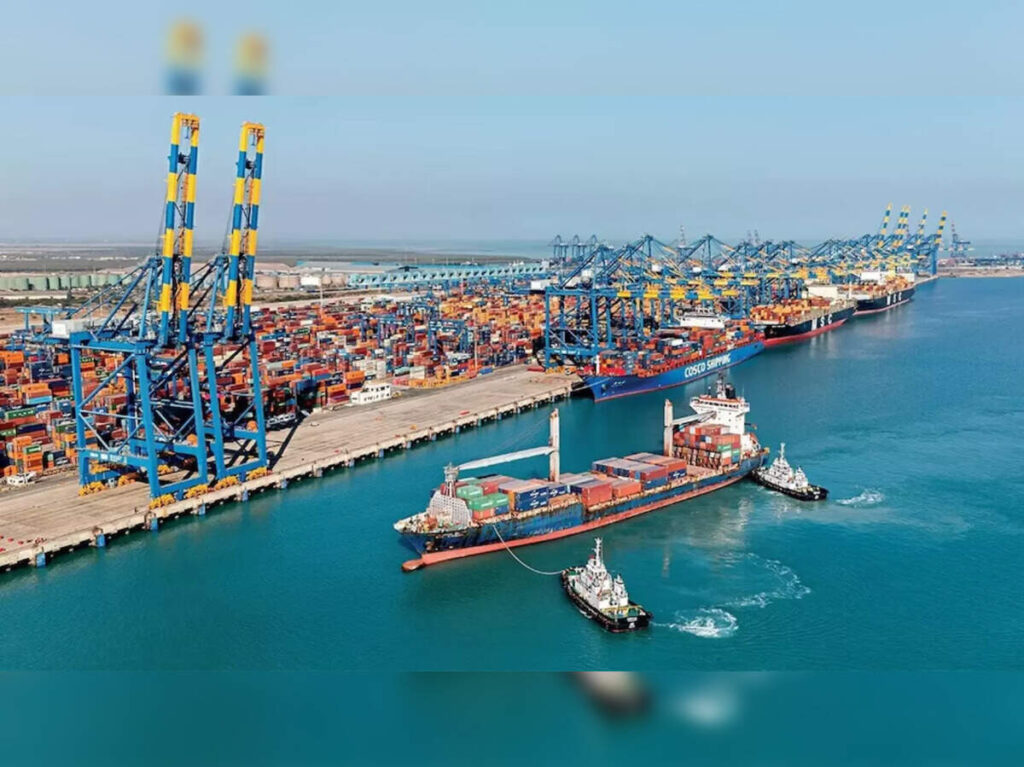NEW DELHI: Merchandise exports from India grew 0.67 per cent at $41.97 billion in March, mainly due to the front-loading of shipments in anticipation of US President Donald Trump’s imposition of reciprocal tariffs from April 9, which has been temporarily paused.
Imports witnessed 11 per cent growth year-on-year (Y-o-Y) at $63.51 billion, which resulted in a widening of the trade deficit to $21.54 billion in the month, as compared to $15.31 billion a year earlier.
The trade deficit stood at $14 billion in February. The rise in imports was mainly due to a sharp increase in inbound shipments of oil and gold, according to the data released by the Department of Commerce on Monday.
Oil imports stood at $19 billion in March, the highest since May 2024, when they were $19.95 billion. On a cumulative basis, in 2024-25, merchandise exports remained flat at $437.42 billion as compared to $437.07 billion during the year-ago period.
Exports contracted in six of the 12 months in FY25, due to softening in global petroleum prices and rising uncertainties amid the restrictive trade practices by the United States (US) January onwards.
Union Commerce Secretary Sunil Barthwal said FY25 was a difficult year for trade, with geopolitical tensions, sea routes being impacted, and countries getting affected by recession.
“India has done better than other countries,” Barthwal told reporters in a briefing.
The outlook of India’s merchandise exports remains uncertain due to the looming threat of reciprocal and sectoral additional tariffs Washington has been planning and has implemented in the case of sectors such as steel, aluminium, and automobile imports.
While Washington has temporarily paused country-specific reciprocal tariffs, since April 9 the US administration imposed a 10 per cent additional import tariff on all its trade partners except China, creating uncertainty around the world.
Barthwal said the export outlook would depend on several factors amid rapid changes in decisions by the US, including a 90-day pause in reciprocal tariffs, exemption for some electronics items, the possibility of any retaliatory action some countries might take, and different countries trying to strike deals with the US.
“There are (10 per cent) base tariffs on several countries, there are reciprocal tariffs on certain countries, and there is a USMCA (US-Mexico-Canada Agreement), on which there are different sources of tariff. Sectoral tariffs are in place now, secondary tariffs too are in place (on Venezuelan oil). We will look at the impact and have a detailed exercise,” Barthwal said.
The data further showed non-petroleum products, a parameter of the health of exports, saw 2.2 per cent growth at $37.07 billion in March.
Aditi Nayar, chief economist at Icra, said the merchandise export data belied expectations of a front-loading of shipments ahead of the proposed tariffs, contributing to a higher than expected deficit figure. “We now anticipate a current account surplus of $1-3 billion in Q4FY25, with a full-year deficit of around 0.9 per cent of gross domestic product,” Nayar said.
Total exports — merchandise and services — stood at $820 billion as against $778 billion during 2023-24, the data showed. The growth was mainly led by a jump in services exports.
Services exports in March saw 5.5 per cent growth at $31.64 billion while services imports witnessed a 17.3 per cent rise to $13.73 billion, resulting in a surplus of $17.88 billion.
The services data for March, however, is an “estimate”, which will be revised, based on the Reserve Bank of India’s subsequent release.
Source: Business Standard




 Trump Leads U.S. To Another Constitutional Crisis On The Issue Of Illegal Deportation
Trump Leads U.S. To Another Constitutional Crisis On The Issue Of Illegal Deportation 